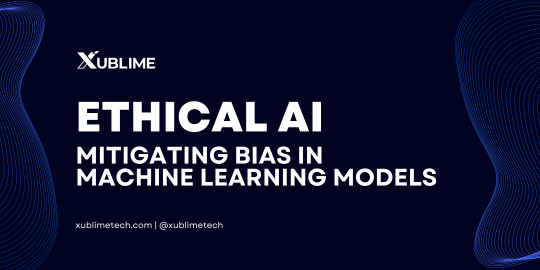#ML and Deep Learning
Explore tagged Tumblr posts
Photo

Nvidia has announced the availability of DGX Cloud on Oracle Cloud Infrastructure. DGX Cloud is a fast, easy and secure way to deploy deep learning and AI applications. It is the first fully integrated, end-to-end AI platform that provides everything you need to train and deploy your applications.
#AI#Automation#Data Infrastructure#Enterprise Analytics#ML and Deep Learning#AutoML#Big Data and Analytics#Business Intelligence#Business Process Automation#category-/Business & Industrial#category-/Computers & Electronics#category-/Computers & Electronics/Computer Hardware#category-/Computers & Electronics/Consumer Electronics#category-/Computers & Electronics/Enterprise Technology#category-/Computers & Electronics/Software#category-/News#category-/Science/Computer Science#category-/Science/Engineering & Technology#Conversational AI#Data Labelling#Data Management#Data Networks#Data Science#Data Storage and Cloud#Development Automation#DGX Cloud#Disaster Recovery and Business Continuity#enterprise LLMs#Generative AI
0 notes
Text
7 Computer Vision Projects for All Levels - KDnuggets
2 notes
·
View notes
Text
2 notes
·
View notes
Text
Behind the Code: How AI Is Quietly Reshaping Software Development and the Top Risks You Must Know
AI Software Development

In 2025, artificial intelligence (AI) is no longer just a buzzword; it has become a driving force behind the scenes, transforming software development. From AI-powered code generation to advanced testing tools, machine learning (ML) and deep learning (DL) are significantly influencing how developers build, test, and deploy applications. While these innovations offer speed, accuracy, and automation, they also introduce subtle yet critical risks that businesses and developers must not overlook. This blog examines how AI is transforming the software development lifecycle and identifies the key risks associated with this evolution.
The Rise of AI in Software Development
Artificial intelligence, machine learning, and deep learning are becoming foundational to modern software engineering. AI tools like ChatGPT, Copilot, and various open AI platforms assist in code suggestions, bug detection, documentation generation, and even architectural decisions. These tools not only reduce development time but also enable less-experienced developers to produce quality code.
Examples of AI in Development:
- AI Chat Bots: Provide 24/7 customer support and collect feedback.
- AI-Powered Code Review: Analyze code for bugs, security flaws, and performance issues.
- Natural Language Processing (NLP): Translate user stories into code or test cases.
- AI for DevOps: Use predictive analytics for server load and automate CI/CD pipelines.
With AI chat platforms, free AI chatbots, and robotic process automation (RPA), the lines between human and machine collaboration are increasingly blurred.
The Hidden Risks of AI in Application Development

While AI offers numerous benefits, it also introduces potential vulnerabilities and unintended consequences. Here are the top risks associated with integrating AI into the development pipeline:
1. Over-Reliance on AI Tools
Over-reliance on AI tools may reduce developer skills and code quality:
- A decline in critical thinking and analytical skills.
- Propagation of inefficient or insecure code patterns.
- Reduced understanding of the software being developed.
2. Bias in Machine Learning Models
AI and ML trained on biased or incomplete data can produce skewed results:
-Applications may produce discriminatory or inaccurate results.
-Risks include brand damage and legal issues in regulated sectors like retail or finance.
3. Security Vulnerabilities
AI-generated code may introduce hidden bugs or create opportunities for exploitation:
-Many AI tools scrape open-source data, which might include insecure or outdated libraries.
-Hackers could manipulate AI-generated models for malicious purposes.
4. Data Privacy and Compliance Issues
AI models often need large datasets with sensitive information:
-Misuse or leakage of data can lead to compliance violations (e.g., GDPR).
-Using tools like Google AI Chat or OpenAI Chatbots can raise data storage concerns.
5. Transparency and Explainability Challenges
Understanding AI, especially deep learning decisions, is challenging:
-A lack of explainability complicates debugging processes.
-There are regulatory issues in industries that require audit trails (e.g., insurance, healthcare).
AI and Its Influence Across Development Phases

Planning & Design: AI platforms analyze historical data to forecast project timelines and resource allocation.
Risks: False assumptions from inaccurate historical data can mislead project planning.
Coding: AI-powered IDEs and assistants suggest code snippets, auto-complete functions, and generate boilerplate code.
Risks: AI chatbots may overlook edge cases or scalability concerns.
Testing: Automated test case generation using AI ensures broader coverage in less time.
Risks: AI might miss human-centric use cases and unique behavioral scenarios.
Deployment & Maintenance: AI helps predict failures and automates software patching using computer vision and ML.
Risks:False positives or missed anomalies in logs could lead to outages.
The Role of AI in Retail, RPA, and Computer Vision

Industries such as retail and manufacturing are increasingly integrating AI.
In Retail: AI is used for chatbots, customer data analytics, and inventory management tools, enhancing personalized shopping experiences through machine learning and deep learning.
Risk: Over-personalization and surveillance-like tracking raise ethical concerns.
In RPA: Robotic Process Automation tools simplify repetitive back-end tasks. AI adds decision-making capabilities to RPA.
Risk: Errors in automation can lead to large-scale operational failures.
In Computer Vision: AI is applied in image classification, facial recognition, and quality control.
Risk: Misclassification or identity-related issues could lead to regulatory scrutiny.
Navigating the Risks: Best Practices
To safely harness the power of AI in development, businesses should adopt strategic measures, such as establishing AI ethics policies and defining acceptable use guidelines.
By understanding the transformative power of AI and proactively addressing its risks, organizations can better position themselves for a successful future in software development. Key Recommendations:
Audit and regularly update AI datasets to avoid bias.
Use explainable AI models where possible.
Train developers on AI tools while reinforcing core engineering skills.
Ensure AI integrations comply with data protection and security standards.
Final Thoughts: Embracing AI While Staying Secure
AI, ML, and DL have revolutionized software development, enabling automation, accuracy, and innovation. However, they bring complex risks that require careful management. Organizations must adopt a balanced approach—leveraging the strengths of AI platforms like GPT chat AI, open chat AI, and RPA tools while maintaining strict oversight.
As we move forward, embracing AI in a responsible and informed manner is critical. From enterprise AI adoption to computer vision applications, businesses that align technological growth with ethical and secure practices will lead the future of development.
#artificial intelligence chat#ai and software development#free ai chat bot#machine learning deep learning artificial intelligence#rpa#ai talking#artificial intelligence machine learning and deep learning#artificial intelligence deep learning#ai chat gpt#chat ai online#best ai chat#ai ml dl#ai chat online#ai chat bot online#machine learning and deep learning#deep learning institute nvidia#open chat ai#google chat bot#chat bot gpt#artificial neural network in machine learning#openai chat bot#google ai chat#ai deep learning#artificial neural network machine learning#ai gpt chat#chat ai free#ai chat online free#ai and deep learning#software development#gpt chat ai
0 notes
Text
#artificial intelligence services#machine learning solutions#AI development company#machine learning development#AI services India#AI consulting services#ML model development#custom AI solutions#deep learning services#natural language processing#computer vision solutions#AI integration services#AI for business#enterprise AI solutions#machine learning consulting#predictive analytics#AI software development#intelligent automation
0 notes
Text
Ethical AI: Mitigating Bias in Machine Learning Models

The Critical Importance of Unbiased AI Systems
As artificial intelligence becomes increasingly embedded in business processes and decision-making systems, the issue of algorithmic bias has emerged as a pressing concern. Recent industry reports indicate that a significant majority of AI implementations exhibit some form of bias, potentially leading to discriminatory outcomes and exposing organizations to substantial reputational and regulatory risks.
Key Statistics:
Gartner research (2023) found that 85% of AI models demonstrate bias due to problematic training data
McKinsey analysis (2024) revealed organizations deploying biased AI systems face 30% higher compliance penalties
Documented Cases of AI Bias in Enterprise Applications
Case Study 1: Large Language Model Political Bias (2024)
Stanford University researchers identified measurable political bias in ChatGPT 4.0’s responses, with the system applying 40% more qualifying statements to conservative-leaning prompts compared to liberal ones. This finding raises concerns about AI systems potentially influencing information ecosystems.
Case Study 2: Healthcare Algorithm Disparities (2023)
A Johns Hopkins Medicine study demonstrated that clinical decision-support AI systems consistently underestimated the acuity of Black patients’ medical conditions by approximately 35% compared to white patients with identical symptoms.
Case Study 3: Professional Platform Algorithmic Discrimination (2024)
Independent analysis of LinkedIn’s recommendation engine revealed the platform’s AI suggested technical roles with 28% higher compensation to male users than to equally qualified female professionals.
Underlying Causes of Algorithmic Bias
The Historical Data Problem
AI systems inherently reflect the biases present in their training data. For instance:
Credit scoring models trained on decades of lending data may perpetuate historical redlining practices
Facial analysis systems developed primarily using Caucasian facial images demonstrate higher error rates for other ethnic groups
The Self-Reinforcing Discrimination Cycle
Biased algorithmic outputs frequently lead to biased real-world decisions, which then generate similarly skewed data for future model training, creating a dangerous feedback loop that can amplify societal inequities.
Evidence-Based Strategies for Bias Mitigation
1. Comprehensive Data Auditing and Enrichment
Conduct systematic reviews of training datasets for representation gaps
Implement active data collection strategies to include underrepresented populations
Employ synthetic data generation techniques to address diversity deficiencies
Illustrative Example: Microsoft’s facial recognition system achieved parity in accuracy across demographic groups through deliberate data enhancement efforts, eliminating previous performance disparities.
2. Continuous Bias Monitoring Frameworks
Deploy specialized tools such as IBM’s AI Fairness 360 or Google’s Responsible AI Toolkit
Establish automated alert systems for detecting emerging bias patterns
3. Multidisciplinary Development Teams
Incorporate social scientists and ethics specialists into AI development processes
Mandate bias awareness training for technical staff
Form independent ethics review committees
4. Explainable AI Methodologies
Implement decision visualization techniques
Develop clear, accessible explanations of algorithmic processes
Maintain comprehensive documentation of model development and testing
5. Rigorous Testing Protocols
Conduct pre-deployment bias stress testing
Establish ongoing performance monitoring systems
Create structured feedback mechanisms with stakeholder communities
The Organizational Value Proposition
Firms implementing robust bias mitigation protocols report:
25% improvement in customer trust metrics (Accenture, 2023)
40% reduction in compliance-related costs (Deloitte, 2024)
Threefold increase in successful AI adoption rates
Conclusion: Building Responsible AI Systems
Addressing algorithmic bias requires more than technical solutions — it demands a comprehensive organizational commitment to ethical AI development. By implementing rigorous data practices, continuous monitoring systems, and multidisciplinary oversight, enterprises can develop AI systems that not only avoid harm but actively promote fairness and equity.
The path forward requires sustained investment in both technological solutions and governance frameworks to ensure AI systems meet the highest standards of fairness and accountability. Organizations that prioritize these efforts will be better positioned to harness AI’s full potential while maintaining stakeholder trust and regulatory compliance.
#artificial intelligence#machine learning#technology#deep learning#ai#web#web developers#tech#techinnovation#ai generated#ethical ai#ai bias#Artificial Intelligence Bias#bias#ml bias
0 notes
Text
Start Your Machine Learning Projects Journey with Takeoff Projects
Machine learning is a growing field that has changed how businesses work and make decisions. At Takeoff Projects, we provide students and professionals with exciting opportunities to explore Machine Learning Projects that solve real-world problems. These projects are designed to help you learn by doing, making complex concepts easy to understand. Whether you are a beginner or an experienced coder, our projects are tailored to match your skill level.

One popular project involves building a spam email detector. This project teaches you how to use algorithms to classify emails as spam or not based on their content. You’ll work with datasets, clean the data, and train a machine learning model to improve its accuracy. Another favorite project is creating a movie recommendation system, like the ones used by streaming platforms. This project introduces collaborative filtering and how to personalize user experiences by predicting what they’ll like.
For students interested in finance, we offer projects like stock price prediction, which involves analysing historical data to forecast market trends. You’ll learn how to use Python libraries like Pandas and Scikit-learn to process data and build predictive models. Another exciting project is image recognition, where you train a model to identify objects or faces in pictures. This project gives you hands-on experience with neural networks and deep learning techniques.
At Takeoff Projects, we also focus on healthcare solutions, such as predicting diseases based on patient data or developing systems to monitor a patient’s health. These projects help you understand how machine learning can save lives and improve medical services.
#ML projects for students#real-world machine learning#beginner machine learning projects#advanced ML projects#Python machine learning#AI projects#deep learning projects
0 notes
Text
Praktisk AI-lärande: Verktyg, resurser och projekt
För att börja lära dig om artificiell intelligens (AI) på ett strukturerat sätt kan du följa dessa steg, beroende på din bakgrund och nivå av tidigare kunskap. Continue reading Praktisk AI-lärande: Verktyg, resurser och projekt
#AI#Artificiell intelligens#Deep learning#Djupinlärning#Lär dig AI#Maskininlärning#ML#Praktisk AI#Pyrhon#Stark AI#Svag AI
0 notes
Text
DEEP LEARNING:
Deep learning falls under machine learning, which is a division of artificial intelligence (AI). It requires teaching artificial neural networks, which are inspired by the structure and function of the human brain, to identify patterns and make choices. These networks consist of layers of connected nodes, also known as "neurons," that analyze input data and transmit it through several layers (therefore "deep" learning) to make forecasts or categorizations.
Important elements of deep learning consist of:
Deep learning is dependent on deep neural networks, which consist of numerous hidden layers situated between the input and output layers. Different levels of abstraction are extracted by each layer from the input data.
Extensive datasets are usually necessary for training deep learning models as they help in understanding intricate data features and patterns.
Extensive computational power is needed for training deep learning models, usually through the use of GPUs or specialized hardware such as TPUs.
Uses: Deep learning is the technology behind numerous sophisticated AI applications, including image and speech recognition, natural language processing, autonomous vehicles, and other solutions.
Some of the well-known deep learning tools are TensorFlow, PyTorch, and Keras, which simplify the process of creating, training, and implementing deep neural networks for developers.
https://www.iilm.ac.in
https://www.iilm.edu
#engineering college#engineering student#deep learning#ai ml development services#machine learning development company
0 notes
Text
Paper page - Open-Qwen2VL: Compute-Efficient Pre-Training of Fully-Open Multimodal LLMs on Academic Resources
0 notes
Text
Elevate Your Data Science Skills with Data Science Course in Pune

Success in the rapidly evolving field of data science hinges on one key factor: quality data. Before diving into more complex machine learning algorithms and detailed analysis, starting with a clean data set is important. At The Cyber Success Institute, our Data Science Course in Pune emphasizes mastering these core skills, equipping you with the expertise to handle data efficiently and drive impactful results. These basic data cleaning steps, known as data wrangling and preprocessing, are necessary to process raw data in sophisticated ways that support accurate analysis and prediction to hone these basic skills to process data thoroughly and prepare amazing results A resource that gives you essential knowledge.
Transform Your Career with The Best Data Science Course at Cyber Success
Data wrangling, or data manging, is the process of transforming and processing raw data from its often messy origin into a more usable form. This process involves preparing, organizing, and enhancing data to make it more valuable for analysis and modeling. Preprocessing, which is less controversial, focuses primarily on preparing data for machine learning models to normalize, transform, and scale them to improve performance
At the Cyber Success Institute, we understand that strong data disputes are the cornerstone of any data science project. Our Data Science Course in Pune offers hands-on training in data wrangling and pre-processing, enabling you to effectively transform raw data into actionable insights.
Discover Data Cleaning Excellence with The Best Data Science Course at Cyber Success
The data management process involves preparing, organizing, and enhancing the data to make it more valuable for analysis and modeling. Less controversial preprocessing focuses on data preparation for machine learning models to ensure performance data quality will directly affect the accuracy and reliability of machine learning models The information is well suited and ensures insights are accurate and useful. This helps to identify hidden patterns and saves time during sample development and subsequent analysis. At Cyber Success Institute, we focus on the importance of data security requirements so we prepare you and your employees to ensure that your data is always up to date. Our Data Science Course in Pune offers hands-on training in data wrangling and pre-processing, enabling you to effectively transform raw data into actionable insights. Basic Steps in Data Management and Preprocessing,
Data cleaning: This first and most important step includes handling missing values, eliminating inconsistencies, and eliminating redundant data points. Effective data cleaning ensures that the dataset is reliable, it is accurate and ready for analysis.
Data conversion: Once prepared, the data must be converted to usable form. This may involve converting categorical variables into numeric ones using techniques such as one-hot encoding or label encoding. Normalization and standardization are used to ensure that all factors contribute to the equality of the model, with no feature dominating due to scale differences make sure you are prepared to handle a variety of data environments.
Feature Engineering: Feature engineering is the process of creating new features from existing data to better capture underlying patterns. This may involve forming interactive phrases, setting attributes, or decomposing timestamps into more meaningful objects such as "day of the week" or "hour of the day".
Data reduction: Sometimes data sets can have too many or too many dimensions, which can lead to overqualification or computational costs. Data reduction techniques such as principal component analysis (PCA), feature selection, and dimensionality reduction are essential to simplify data sets while preserving valuable information Our Data Science Classes in Pune with Placement at the Cyber Success Institute provide valuable experience in data reduction techniques to help you manage large data sets effectively.
Data integration and consolidation: Often, data from multiple sources must be combined to obtain complete data. Data integration involves combining data from databases or files into a combined data set. In our Data Science Course in Pune, you will learn how to combine different types of data to improve and increase the relevance and depth of research.

Why Choose Cyber Success Institute for Data Science Course in Pune?
The Cyber Success Institute is the best IT training institute in Pune, India, offering the best data science course in Pune with Placement assistance, designed to give you a deep understanding of data science from data collection to preprocessing to advanced machine learning. With hands-on experience, expert guidance and a curriculum that is up to date with the latest industry trends, you will be ready to become a data scientist
Here are the highlights of the data science course at Cyber Success Institute, Pune:
Experienced Trainers: Our data science expert trainers bring a wealth of experience in the field of data science, including advanced degrees, industry certifications, strong backgrounds in data analytics, machine learning, AI, and hands-on experience in real-world projects to ensure students learn Entrepreneurs who understand business needs.
Advanced Curriculum: Our Data Science Course in Pune is well structured to cover basic and advanced topics in data science, including Python programming, statistics, data visualization, machine learning, deep learning natural language processing and big data technology.
Free Aptitude Sessions: We believe that strong analytical and problem-solving skills are essential in data science. To support technical training, we offer free aptitude sessions that focus on developing logical reasoning, statistical analysis and critical thinking.
Weekly Mock Interview Sessions: To prepare you for the job, we conduct weekly mock interview sessions that simulate real-world interview situations. These sessions include technical quizzes on data science concepts, coding problems, and behavioral quizzes to build student confidence and improve interview performance.
Hands-on Learning: Our Data Science Course in Pune emphasizes practical, hands-on learning. You will work on real-world projects, data manipulation, machine learning model development, and applications using tools such as Python and Tableau. This approach ensures a deep and practical understanding of data science, preparing them for real job challenges.
100% Placement Assistance: We provide comprehensive placement assistance to help you start your career in data science. This includes writing a resume, preparing for an interview, and connecting with potential employers.
At Cyber Success, our Data Science Course in Pune ensures that students receive a well-rounded education that combines theoretical knowledge with practical experience. We are committed to helping our students become skilled, confident and career-ready data scientists.
Conclusion:
Data management and preprocessing are the unsung heroes of data science, transforming raw data into powerful insights that shape the future. At Cyber Success Institute, our Data Science Course in Pune will teach you the technical skills and it will empower you to lead the data revolution. With immersive, hands-on training, real-world projects, and mentorship from industry experts, we prepare you to harness data’s full potential and drive meaningful impact. Joining Cyber Success Institute, it’s about becoming part of a community committed to excellence and innovation. Start your journey here, master the art of data science with our Data Science Course in Pune, and become a change-maker in this rapidly growing field. Elevate your career, lead with data, and let Cyber Success Institute be your launchpad to success. Your future in data science starts now!
Attend 2 free demo sessions!
To learn more about our course at, https://www.cybersuccess.biz/data-science-course-in-pune/
Secure your place at, https://www.cybersuccess.biz/contact-us/
📍 Our Visit: Cyber Success, Asmani Plaza, 1248 A, opp. Cafe Goodluck, Pulachi Wadi, Deccan Gymkhana, Pune, Maharashtra 411004
📞 For more information, call: 9226913502, 9168665644, 7620686761.
PATH TO SUCCESS - CYBER SUCCESS 👍
#education#training#itinstitute#datascience#big data#data analytics#data cleaning techniques#deep learning#machine learning#ai ml development services#python programming#data science course in Pune#data science classes in pune#data science course with placement in pune#career#mongodb#statistics#data science training institute
0 notes
Text
How Our AI with ML & DL Course Can Shape Your Career A Comprehensive Overview
In today’s data-driven world, the integration of Artificial Intelligence (AI) with Machine Learning (ML) and Deep Learning (DL) is revolutionizing industries and shaping the future of technology. At The DataTech Labs, we understand the transformative power of AI, ML, and DL in shaping careers and driving innovation. In this comprehensive overview, we’ll explore how our AI with ML & DL Course can shape your career and empower you to thrive in the dynamic field of artificial intelligence.

0 notes
Text

Our Machine Learning Development Services offer a comprehensive range of solutions to meet your business needs. From data analysis to algorithm development, we specialize in creating customized Machine Learning solutions that drive business growth.
#machine learning development services#machine learning development company#deep learning development company#machine learning app development company#ml development company#machine learning app development services#machine learning solutions#machine learning developers
0 notes
Text
0 notes
Text
AI vs. ML vs. DL Clearing the Confusion
Raise your hand if you've ever been perplexed by the differences between artificial intelligence (AI), machine learning (ML), and deep learning (DL). Here, we go into greater detail so that you can understand which is better for your specific use cases! Let’s clear up all the confusion!
Click here to know more: https://www.linkedin.com/posts/marsdevs_ai-vs-ml-vs-dl-activity-7108729062562410496-Ikea
0 notes